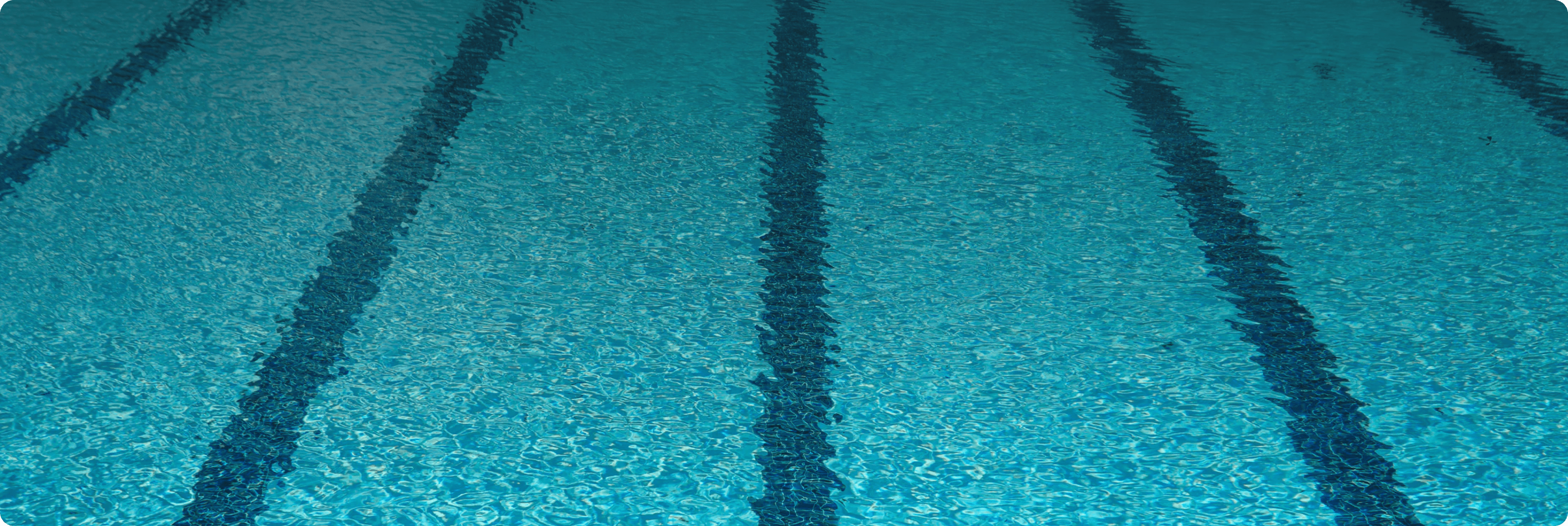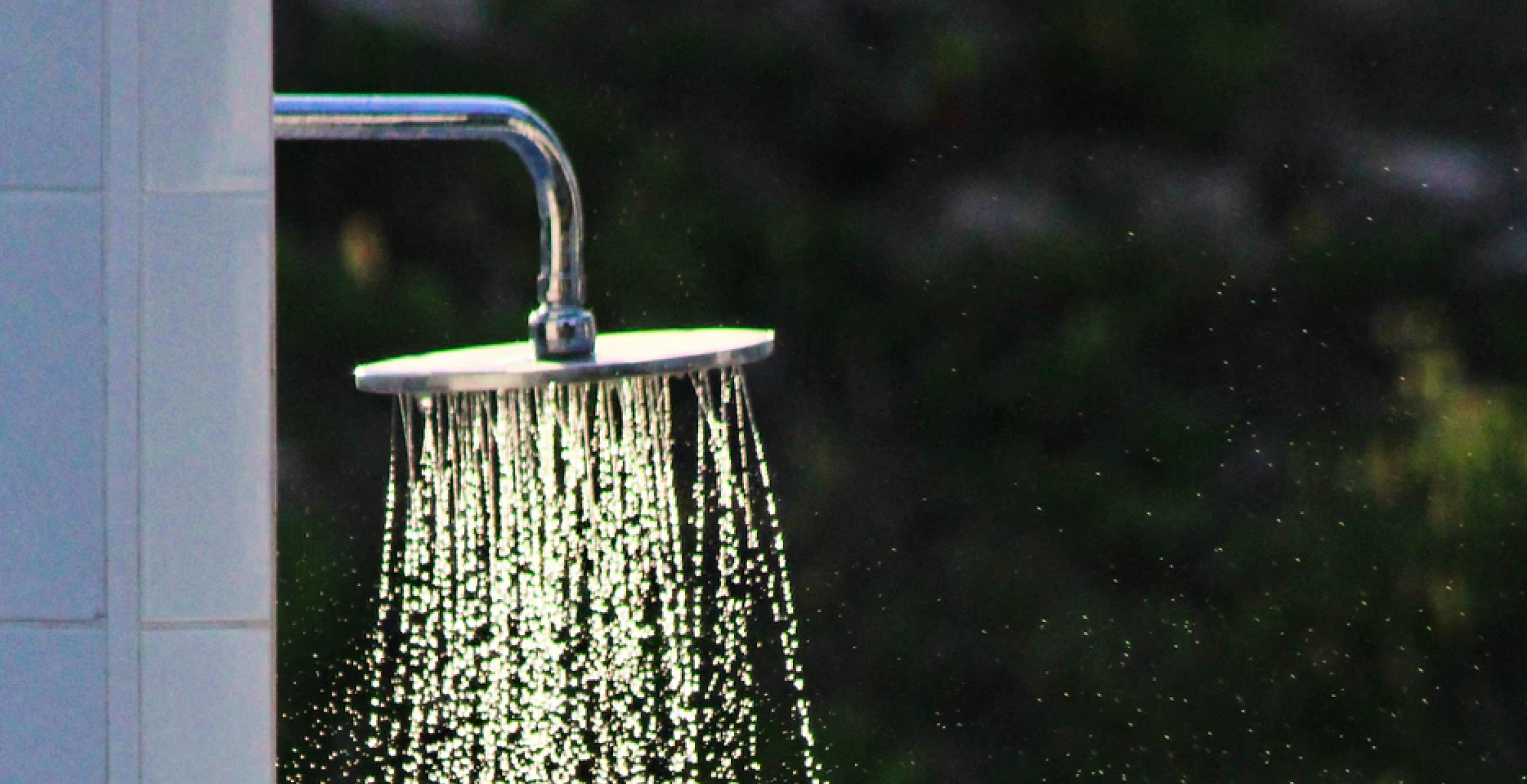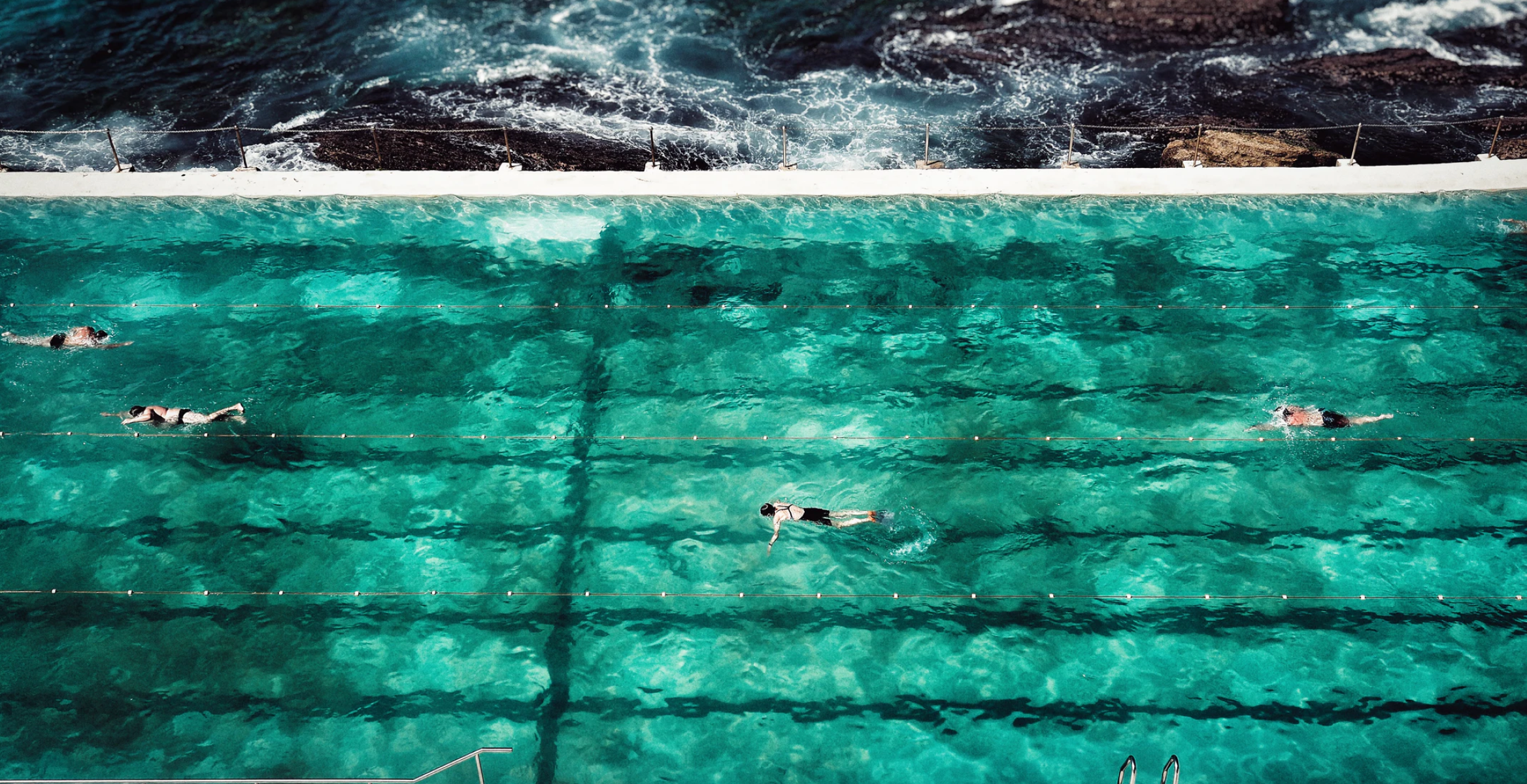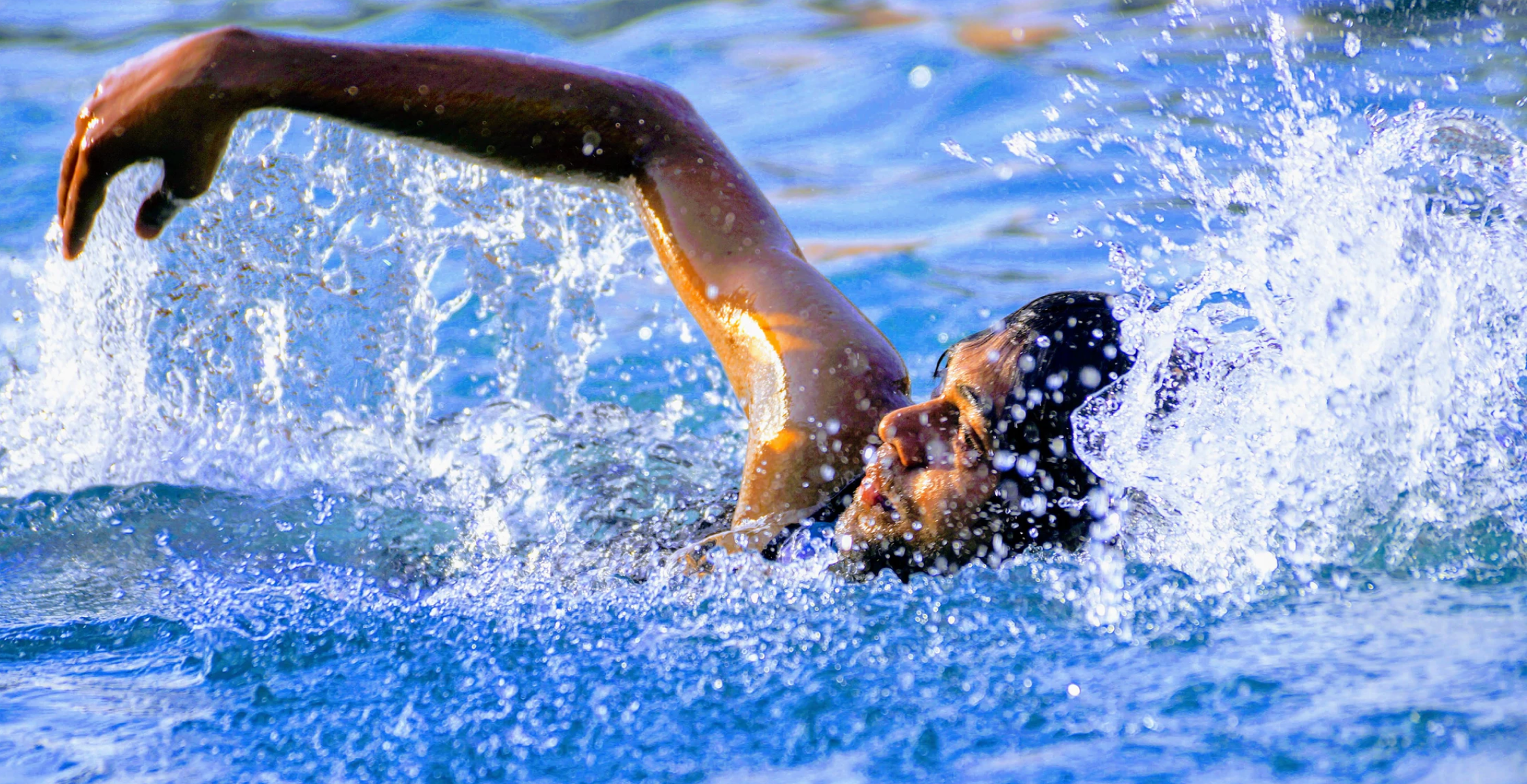Pool Culture

Paul Murphy
2021.03.29
9 min read

I like to swim.
I’d rather swim in the ocean than in a pool, but friendly oceans are rare, so I’m well used to chlorine. Everywhere I go, I look for a pool. This can be challenging.
Unlike a lot of sports, swimming culture varies from country to country. I don’t know why that is. Ski in Colorado, Switzerland, and Chile and the experience is rather similar. But being familiar with American pool culture doesn’t prepare you for a workout in Hong Kong, or Italy. Once I learned this lesson I started approaching swimming in a new country with as few expectations as possible. This turned initial frustrations into a mix of apprehension and excitement. Going to a new pool became a lot more fun.
I should point out that public pools are not tourist destinations. If you don’t speak the local language, prepare to be confused.
America
I learned to swim in America. My first and only coach was an ex-olympian at the University of Texas in Austin. I swam with her for two years. She taught me all the dos and don’t of swimming, or so I thought. I eventually discovered that I’d only learned the American rules.
Two that will surprise a lot of non-Americans: pre-swim showers and caps are unnecessary. You’re welcome to shower and wear a cap, but no one will care if you don’t. Why? Because Americans love technology.
The pool at UT was chlorinated enough to kill anything that might lurk on an unshowered body. Sometimes the levels were so high our teeth hurt. If you’ve never experienced that, it’s special.
My whole life I’d been told that hair damages pool water filters. When I asked my coach about it, she laughed. “Why would we use filters that couldn’t deal with hair?”
Indeed.

Australia
Australians take their swimming seriously. The first time I went to a public pool in Sydney it took me forever to get in. Lanes are organized by speed, and it was clear that picking the wrong lane would be frowned upon. They could have made it easy by being precise – this lane is for 1:20 swimmers, this one for 1:40, etc. – but instead they were just marked “slow” to “fast”. Despite the vague guidance, people knew exactly where they belonged. No one was passing.
I watched people swim for at least 15 minutes before picking a lane.

Hong Kong
If you’re a Western swimmer, Hong Kong is a great experience.
The average age of swimmers is 90, at least. I never figured out what Hong Kongers do for exercise when they’re younger, but they don’t swim. Apparently, it’s a sport they pick up on their 80th birthday with great enthusiasm.
In Hong Kong the public pools open at 6:00. I’m the guy who always shows up before a place opens, especially if it’s for a workout. In most countries that pretty much guaranties I get a pool lane to myself, at least for the first half hour. Not in Hong Kong. At 5:30 the first enthusiasts show up. By 5:45 the crowd is thick with people gossiping and stretching. When the doors finally open, it’s a mad dash to the changing rooms. I think I’ve been to four pools in that country, and the pattern is identical. Hong Kong pool culture is strong!
I like to think I’m efficient. My swim gear is always well-organized and my pre-swim routine is simple. Despite that, I was never first in the pool. A group of spry 90 year olds always beat me to it. I’m a little competitive, and I was sure that one day I’d beat them. Swimming almost daily for three months, I never did.

Taiwan
After Hong Kong I was ready for Taiwan, or so I thought.
Swim caps must be worn at all times. No exceptions. But they have loaners, which is unusual.
The first time I went to Taipei I chose an Airbnb within walking distance of a sports center with a 50m pool. My heart sank when I was told I couldn’t swim in it without a special pink wristband. To get the wristband you have to pass an exam only given on Mondays at 8:00. If you miss it – which I did twice! – you’re stuck in the 25m pool full of people doing aerobic tai chi.
When I was finally allowed into the grownup pool I was almost immediately kicked out for using training equipment. All forbidden. No fins, no paddles, and no snorkel. But other people in the pool were using equipment! Baffling. I eventually found someone who spoke enough English to explain why. Those other people were part of a club and had applied to train. Of course.
Taiwanese lane rules are the opposite of Australia’s. People swim in any lane they want, at whatever speed they want. The lanes are marked, but it makes no difference. In the fast lane I had to deal with people who were literally practicing floating. Eventually I pretended it was an intentional obstacle course and made a game of it.

Japan
Japan is the most difficult place I’ve tried to swim. It’s so difficult that I failed to even find an open pool my first two trips there. It’s easy to find pool websites, but they are the opposite of helpful. In fact, I think they’re all purposefully misleading.
On my third attempt I asked two native Japanese speakers to help me out. They were as baffled by what they found as I was. Google Translate wasn’t the problem after all. They came back to me with information like “You might be able to swim in this pool on Thursday if the junior school isn’t using it. But it’s not clear.” I was determined to figure it out, so my letter to every potential Airbnb host began with “Is there a pool nearby and can you tell me when I can swim there?” One host finally got back to me with very precise information. She had gone to the pool to get it in person. I was finally in!
My first day at the pool was confusing. Shoe etiquette was complicated. I had to take my street shoes off before going into the changing room but was only allowed to wear my thongs (or flip-flops) up to a special rack that I of course didn’t notice. Wearing thongs up to the pool is not OK. After that first infraction I was pointed to a board full of rules I couldn’t read. I smiled and hoped I wouldn’t unintentionally break more.
By the time I’d sorted out my shoes I was thrilled I was finally going to get to swim in a Japanese pool. But before I was able to get in, everyone got out of the pool, and stood around. Five minutes later, everyone got back in. I eventually learned that this is perfectly normal. An hourly break is required.
The most wonderful thing about Japanese pools is their lane etiquette. Unique.
In most places – but not Taiwan – when you swim faster than the person in front of you, you tap their foot and they pull over when they reach the end of the lane. In Japan people pulled over in the middle of the lane, immediately. I was so surprised the first time that ran right into the polite swimmer in front of me.
But my very favorite experience was arriving at the end of a lane and having two or three women clapping for me. The first time it happened I thought I’d misunderstood, but it happened again. Women I would have passed on the return leg pulled over and clapped when I touched the wall. The men never did. They waited until they saw me in the locker room to say “fast” with a thumbs-up!
In Australia I fit into a slow-medium lane, but in Japan I’m fast. If you want to feel good about your speed, go to Japan

Thailand
Swimming in Thailand is also different. Thais don’t swim. Bangkok has two 50m pools that were built for competitions and would be empty if it weren’t for foreigners.
Thailand is run by the military and the closest pool to my house was on a military science compound. Being saluted before and after a workout was always a thrill. Pageantry aside, we all know the military like rules, and Thai pool use doesn’t escape this culture.
In order to be allowed to take the obligatory swimming exam – a 100m swim, 1/10th Taiwan’s requirement! – I needed to get a medical certificate from a hospital. Once I had my certificate and passed my exam I could apply for a pool membership card for which I needed a passport photo, ID, and, of course, some money.
Every time I went for a swim I presented my membership card, watched the clerk record the number in a big book, and paid my entry fee in order to be given an entry ticket. The first time I put the ticket in my pocket and walked away. Someone followed me to make sure I put it in the right place. I didn’t of course and was confronted by a very worked up clerk when I walked out of the locker room. No one else in the pool was wearing a cap but I thought they might be members of a team and had gotten permission to swim capless, so I went back and pulled the cap out of my bag. That didn’t make the clerk feel better at all. Now I was stumped. Luckily an Irish guy was just finishing his swim so I asked him if he had any idea what could be wrong. He smiled and asked me if I’d put my ticket on the spindle between the office and the locker room. He knew.

Italy
The strangest pool culture I’ve ever encountered is definitely Italy’s.
Swimming caps are absolutely essential. Nothing will upset an Italian lifeguard more that someone trying to enter the pool without a cap. Last year my wife was told to remove her sun hat to make sure she was wearing a swim cap under it. They clearly don’t buy their filters from America.
Shoes can’t be worn into the locker room, like in Japan. Pre-swim showers and foot baths are required.
All swimmers are expected to own a bathrobe or poncho with a hood. A towel isn’t a suitable substitute. Those should be worn from the changing area to the shower area. I’ve never worked out why.
Swim suits must be worn at all times, even in the shower. I didn’t understand why until one day a woman walked into the showers looking for her son. Nobody thought it was strange.

Others?
As I mentioned in a recent blog, etiquette is wonderfully malleable and changes from place to place and over time. Pool culture is a good example. Rules and etiquette differ significantly from country to country. All of us building software need to keep this in mind.
If you’ve encountered unexpected pool cultures in other places, please let me know. I don’t mind surprises, but I’d rather be prepared.
See Toucan in action without having to register
About author

Paul Murphy
Toucan co-founder.
Rabbi, driving instructor, and acrobat in parallel universes.
Go back to blog
© 2024 Toucan Events Inc. All rights reserved.
